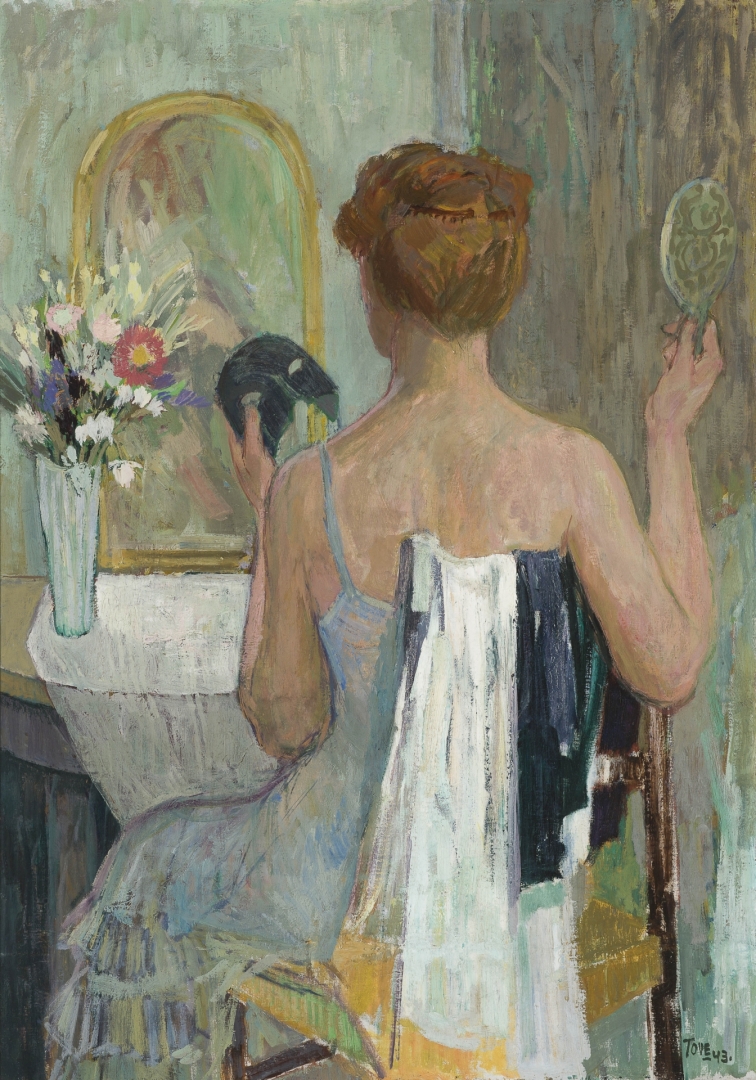The Artists’ Home, located in Etu-Töölö, Helsinki and built with funds bequeathed by Juho and Maria Lallukka is a unique cultural monument in Finland. Prominent figures of the art field have painted and sculpted in this impressive functionalist building. The idea of an artists’ home is that people live and work under the same roof.
The works selected for the exhibition tell the story of the Artists’ Home, while also providing broader views of the phenomena in art and society.
There is no other building in Finland that has housed as many well-known artists: to this day, more than 130 visual artists and a host of musicians and stage artists have stayed at the Artists’ Home. The first artists to move into the Artists’ Home, completed in 1933, included Marcus Collin, Ester Helenius, Eero Nelimarkka, Venny Soldan-Brofeldt and Ellen Thesleff. The Lallukka – Life in the Home of Artists exhibition showcases 43 visual artists who have stayed at the Home and 61 works from 1933 to modern times. Lallukka’s modern artists included in the exhibition are Elina Merenmies, Inka Nieminen and Tommi Toija.

The Artists’ Home provides the setting for the art created there both as a physical space and a state of mind. Even though great artists are living next to each other, everyone respects others’ personal space and lets them work in peace. The House’s atmosphere is accepting and respectful. Sculptor Essi Renvall says that the resident artists from different fields were all acquainted with each other and formed a family of sorts, “the members of which don’t know much about each other.”
However, combining work and family under the same roof has not always been straightforward. The sounds and smells of work are carried to the living spaces, and, similarly, other elements of life also invade the studio spaces. Artists often moved to Lallukka with their family members, some of whom were also artists, themselves. The House’s long-term residents included artist couple Lyyli and Matti Visanti. Eva Cederström also brought both her elderly mother and young daughter to the House. For the children living there, Lallukka has been a fascinating and exciting place to grow up in. Even the young Tove Jansson spent some of her years as a student in her father Viktor Jansson’s studio home at Lallukka.

Life at Lallukka had only just begun when Finland found itself at war in autumn 1939. Artists and the families’ children from Lallukka were called to the front lines, and some of them never returned. However, artists’ life never stopped since there was high demand for art. In the decades after the war, there were heated discussions about art and new trends were forced to defend their place in the field. Abstract art took Finland’s art world by storm, and its significance remained strong in the following decades, as well. Of the pioneers of abstract art, Lars-Gunnar Nordström and Göran Augustson arrived in Lallukka in the 1970s. Slowly, the atmosphere became more relaxed and the ways of making art became more diverse. At the end of the century, a sprawling state of diversity was achieved, which still prevails in Finland’s art field.
In addition to artistry, the residents of the Artists’ Home have also had significant roles as teachers and influencers in the art world.
Lallukka has always been a multi-voiced and vital part of Finnish art. The Artists’ Home forms a miniature world that lives and breathes in its own rhythm. The historical layers are always there, and the idea of the future generations of artists is also a part of Lallukka’s spirit. For nine decades, this exceptional house has lived through changes in both society and art.
The exhibition has been curated by art historian, Marja Lahelma PhD, whose book on this topic was published in October 2020 by Parvs Publishing Company.





